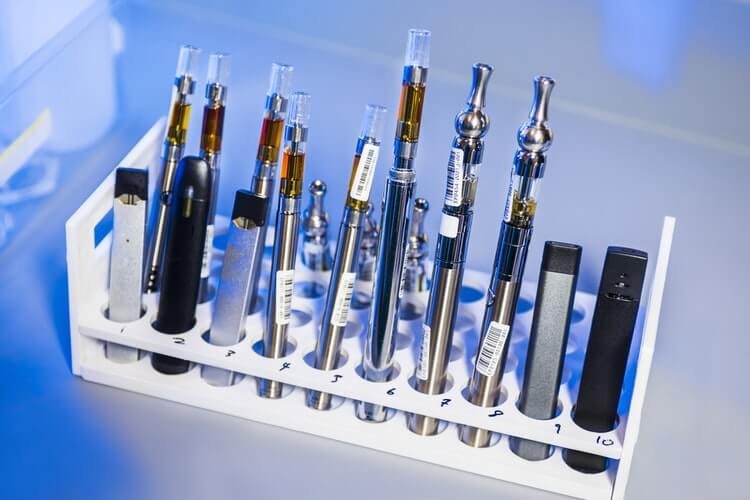Yes, but not entirely.
Early January 2020, the Trump Administration placed a ban on some of vapers’ favorite flavors. This move intends to reduce the rise of teenage vaping, primarily.
As expected, the ban was quickly followed by back lashes from health advocates who, although hailed the policy, said the partial FDA ban might not produce significant-enough results
First published by The Wall Street Journal December 31, the move is inspired by a public health scare about the increasing cases of severe vaping-linked lung diseases. The centers for Disease Control and Prevention has recorded 55 deaths and near 2,561 hospitalized with several conditions.
What Vaping Flavor(s) Did FDA Ban?
Upon Trump’s declaration, the FDA moved to banthe circulation of flavored vape pods – except menthol- and tobacco-flavored varieties.
This vaping ban excludes the use of open-tank devices, an alternative for small establishments. Youngsters are most drawn to pod-based devices than with such open-tank operations.
The ban is targeted at products believed mostly used among young people. Most vape producers make vaporizers and e-liquids ranging from bubble gum to spicy watermelon.
However, health actors have, over time, reported the adverse effects of these on kids’ health. Beside lung concern, the high nicotine content may be another addiction scare.
Juul Follows Suit
As the ban takes effect, Juul, arguably the biggest name in the e-cig industry, has already ceased the distribution of flavored vapes. The allowed variants are the flavors familiar with adults, and that mimics the menthol cigarettes.
Currently, Juulsells mint, menthol, and tobacco-flavored nicotine vapes. Before the ban, the company sold fruit, mango, cream, cucumber flavors.
Health Experts Are Not So OK with Trump’s New Move
Experts like the CEO of the American Heart Association, Nancy Brown, believes FDA’s policy cannottackle the increasing epidemic efficiently.
She, just like some other stakeholders, although commended FDA’s original intent, believes the ‘nation’s children’ will still indulge in the allowed few flavors.
Although Trump initially proposed a complete ban of flavored vapes, since they are particularly attractive to teens, FDA’s moves fall short.
The FDA has, however,promised to keep monitoring E-cig use among youths and take necessary actions, where required.
Alex Azar, Secretary, United States Health and Human Services, reiterated that FDA’s move is not a complete ban, as review over time might return some products to the vaping market – If found safe for kids. Trumps’ statement, “we are going to get back in the market very very quickly,” seems to validate this claim.
Health bodies believe e-cig might still have a useful function, which is helping tobacco users quit. As research continues on vape’s potential to help addicted tobacco smokers quit, there’s yet no reliable evidence that places e-cig as an effective and safe way to help smokers quit.
The Case for Addiction and Lung Diseases
A 2018 study reveals the popularity and damaging effects of flavored e-cigs are for the young. Data shows that about 2.4 million teens reported e-cig use at least once in the last 30 days before the study.
Lung health experts are concerned about the alarming numbers as any nicotine-rich products – whether candy, fruity, etc.– can be a tasty ride to lifelong addiction.
While the youngsters get drawn to the flavors initially, as they advance in age, they often graduate to nicotine and tetrahydrocannabinol (THC), the widely dreaded (yet most sought-after) high-causing compound in marijuana.
Infact, emerging results seem frightening, as several lung injuries has been linked to e-cigarettes. Vitamin E acetate, a common ingredient in vaping products, is the suspect.
In response to the rising epidemic, several state governments have followed suit to ban flavored vapes.
Will the Selective Ban Stop Vaping Among Youths?
The ban on some vaping flavors looks well-intended and may reduce vaping, particularly among youths. However, it has received a lot of criticism, which is logical and well-founded. Many believed the product allowed should have been banned too.
That said, FDA’s argument also looks good – as they claim while the allowed flavors will hopefully discourage rich-flavor-seeking youngsters, they offer an option for smokers looking to quit smoking for less harmful nicotine dosing.
However, health workers and legislators are still making right moves for a total ban on vaping products.
However, President Trump has signed into law a new minimum age. Thenceforth, retailers are prohibited selling tobacco product, cigars, cigarette – and e-cigs – to persons under 21
That said, noteworthily, the FDA’s move also excludes THC-infused vaping products since marijuana-friendly states regulate them.
The February 2, 2020, federal ban on many vape flavors, excepting menthol and tobacco, had attracted mixed reactions.
The case for the new regulation is that the limited options may not stop people from vaping. That is, although these efforts are commendable and may help reduce the increase in vaping among youths, they aren’t the final solution.
On the other hand, some think the new rule is for good intent and will reduce vaping attraction among the youngsters and, as well, leave some options for those looking to quit tobacco for less-harmful vape.



